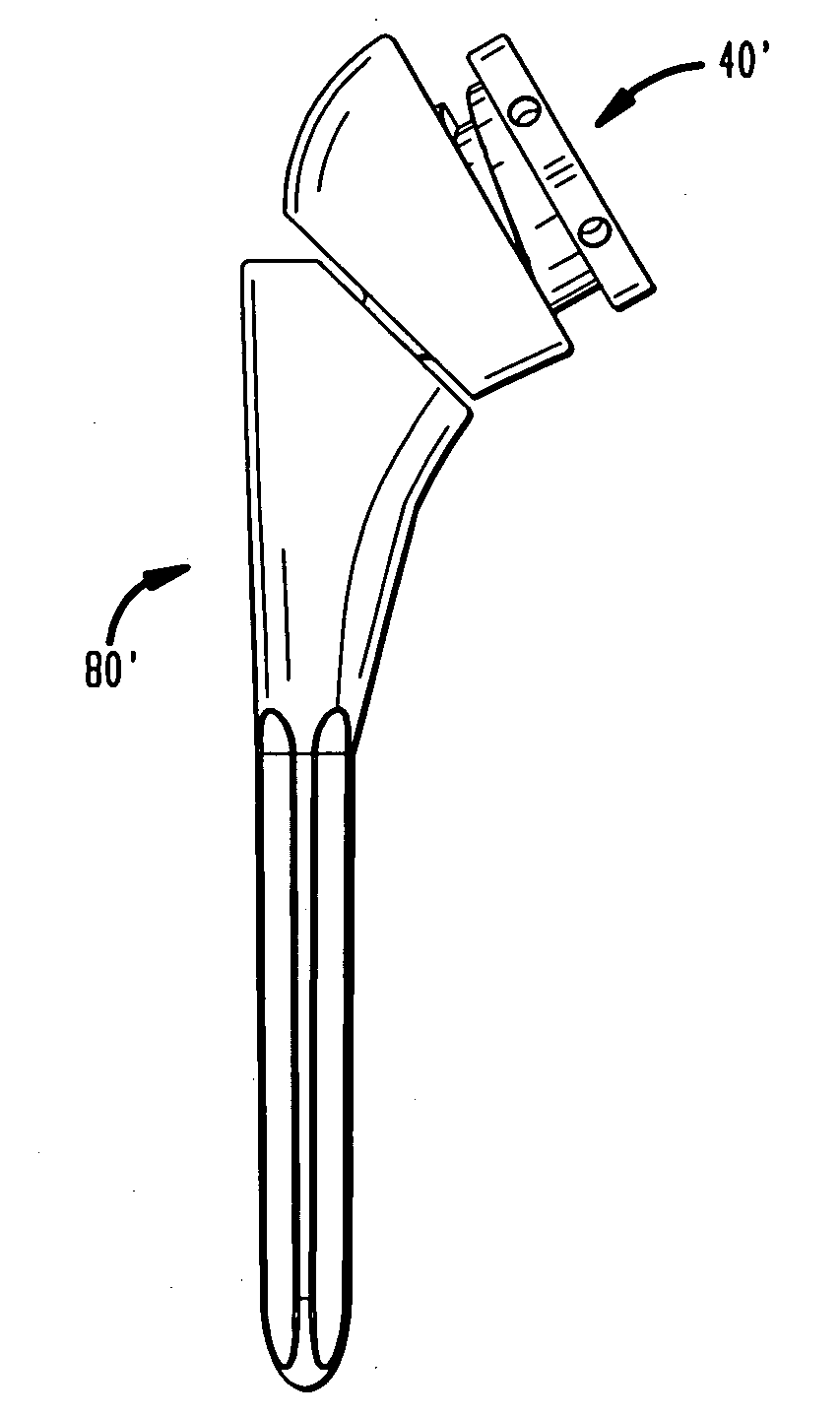Expandable reverse shoulder trial
a trial and expansion technology, applied in the field of expandable reverse shoulder trial, can solve the problems of dislocation of joints, decrease in size and cost of overall instrument sets, etc., and achieve the effects of reducing distance, increasing thickness, and facilitating trialing
- Summary
- Abstract
- Description
- Claims
- Application Information
AI Technical Summary
Benefits of technology
Problems solved by technology
Method used
Image
Examples
Embodiment Construction
[0080]Referring to FIGS. 1A-1D, there is shown an embodiment of a humeral cup of the present invention designated generally by reference numeral 10. As shown in those figures, cup 10 includes a proximal end 12 and a distal end 14. Cup 10 preferably further includes a circular wall 16 and a base 18 defining a recess 20. Recess 20 defines a central axis 22 as shown in FIG. 1C. Preferably, a guide portion 23 protrudes from wall 16. Guide portion 23 is preferably configured as a pin.
[0081]In the preferred embodiment, proximal end 12 and distal end 14 of cup 10 are not coplanar. Between distal end surface 14 and proximal end surface 12 is a hemispherical outer surface 24. In an alternative embodiment, as shown in FIGS. 2A-2D, a cup 10′ further includes a concave surface 26 located between a proximal end surface 12′ and a distal end surface 14′. Surface 26 faces medially and is preferably configured to allow for greater articulation of cup 10′ with respect to a scapula bone after cup 10′ ...
PUM
 Login to View More
Login to View More Abstract
Description
Claims
Application Information
 Login to View More
Login to View More - R&D
- Intellectual Property
- Life Sciences
- Materials
- Tech Scout
- Unparalleled Data Quality
- Higher Quality Content
- 60% Fewer Hallucinations
Browse by: Latest US Patents, China's latest patents, Technical Efficacy Thesaurus, Application Domain, Technology Topic, Popular Technical Reports.
© 2025 PatSnap. All rights reserved.Legal|Privacy policy|Modern Slavery Act Transparency Statement|Sitemap|About US| Contact US: help@patsnap.com



